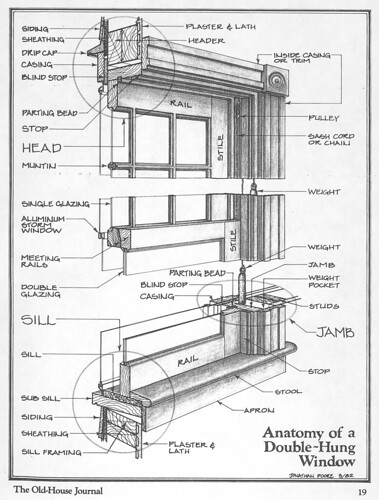Greening, sustainability, and historic windows
Co-op America, the sponsor of the Green Festivals, has done two very smart things. This past year, they decided that every paid attendee would get one year's free membership. The second thing they just did is relaunch/reposition as Green America, focused on sustainability, not just being glibly green.
One of the benefits of membership is a quarterly newsletter called "Real Green" (formerly called "Real Money") in addition to the quarterly magazine "Green American" (formerly called Co-op America Quarterly).
Since I just hung up the phone on a sales call wanting to sell us vinyl windows, it reminds me that there is a totally great article in "Real Green" on "Three Steps to Super-Efficient Windows."
The story makes the point that:
1. Modern replacement windows last 15 to 20 years and therefore have a "payback period" of 40.5 years, which means that they aren't cost effective.
2. Properly maintained and rehabilitated "old wood windows" can last another 100 years or more.
But to get this excellent article, you'll have to join... from the article:
Consider hiring contractors with historic preservation experience, even if your home isn't in a historic district--they are more likely not to pressure you to replace your windows intead.
I thought about that last weekend when Home Depot ran full page ads in the major newspapers across the country about their new working capital program for contractors, so that contractors can do renovation work. And how with historic preservation projects, typically 70% of the total project is spent on labor, and only 30% on materials, many local, while typical renovation and new construction projects spend 50% on labor, and 50% on materials, with most of the materials coming from out of the local area.

These resources are made available by the City of Albany, Oregon webpage on Historic Windows:
• Secretary of Interiors Standards on Windows
• Preservation Brief # 9, The Repair of Historic Wooden Windows
• Tips on Window Repair
• Energy Efficiency Study (pdf)
• Window Parts Diagram (jpg)
• Constructing Wood Storm Windows (pdf)
• Why Say No to Vinyl Windows (pdf)
• The Real Cost of Replacing Windows (pdf)
DC's publication is being updated, but is available here: Windows and Doors for Historic Buildings.
Labels: energy, green-environment-urban, historic preservation



0 Comments:
Post a Comment
<< Home